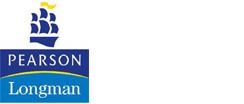Continuing Mathematics Project
The Continuing Mathematics Project (CMP), published by Longman in the 1970s, was conceived as a response to the problem of insufficiently numerate students who were studying beyond '0' level. The Dainton Report recommended that " ... normally all pupils should study mathematics until they leave school ...". The provision of courses was problematic, partly because of the diverse needs of the students and partly because a critical shortage of mathematics teachers made it difficult to provide appropriate courses in many schools. This climate of concern coincided with the founding of a new government-funded organisation – the National Council for Educational Technology. Soon after it was established, the National Council held a conference to consider areas of the education system where it might promote and stimulate activity demonstrating the contribution of educational technology in the systematic development and evaluation of learning systems. Initially the Project was conceived to have quite a revolutionary structure with units, each containing a system of programmes and diagnostic tests, that would include audio-visual resources where appropriate. In addition, there would be accompanying materials for teachers, such as teacher manuals and films of the material in use. Teachers suggested independent learning materials might make a welcome contribution. The relative complexity of material involving texts, answer booklets, games, film-strips and tapes was immediately seen as a major problem by the specialists who identified the marketing difficulties which were likely to arise. Although some initial units had audiovisual materials, it was distilled into self learning booklets. These booklets were divided into three categories: (i) revision units (ii) introductory units (iii) sequences of units forming short courses.
Resources
Filter
This unit from the Continuing Mathematics Project goes into detail on how logarithms can be used to determine the laws which connect two variables on which experimental data has been collected. The unit follows naturally from the unit entitled The Theory of Logarithms.
The objectives of the unit are that...
This unit from the Continuing Mathematics Project is concerned with the calculation of the sides and angles of triangles and how this is used by the surveyor, the navigator, and the cartographer. The development of the television, the light and the road have all relied on trigonometry.
The objectives of the...
This unit from the Continuing Mathematics Project has been planned to help students learn how to handle inequalities, and how to represent them graphically. Students should be familiar with manipulating positive and negative numbers, representing equations of the form y + 3x = 6 as a graph and finding the solution...
This unit from the Continuing Mathematics Project is about linear programming - a procedure which is used widely in industry to solve management problems. The work here is an introduction to the subject.
There are no really new mathematical techniques in the unit. It is rather an amalgamation of things...






